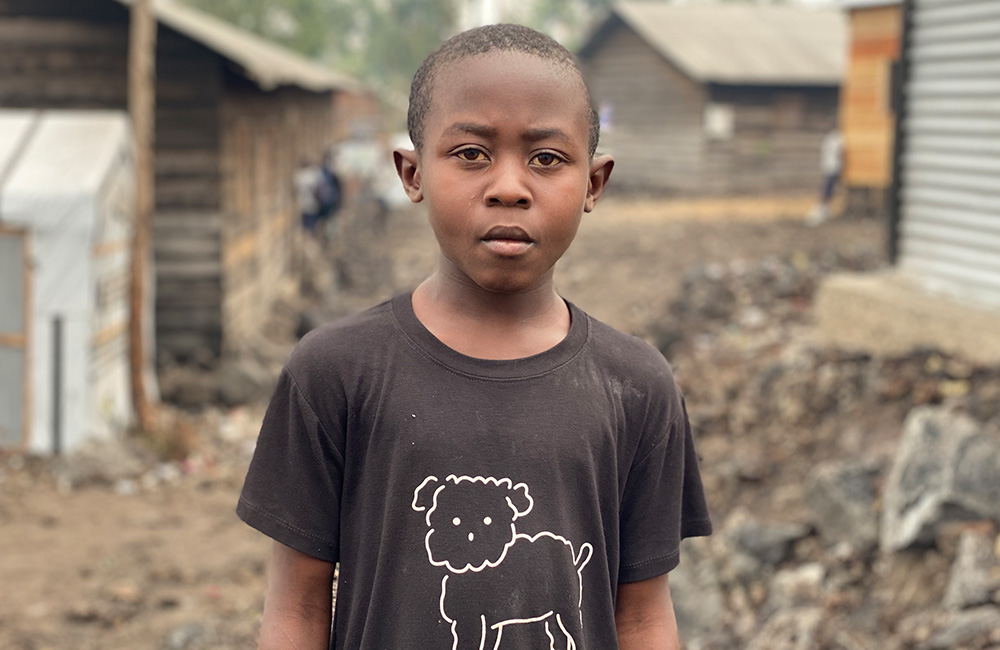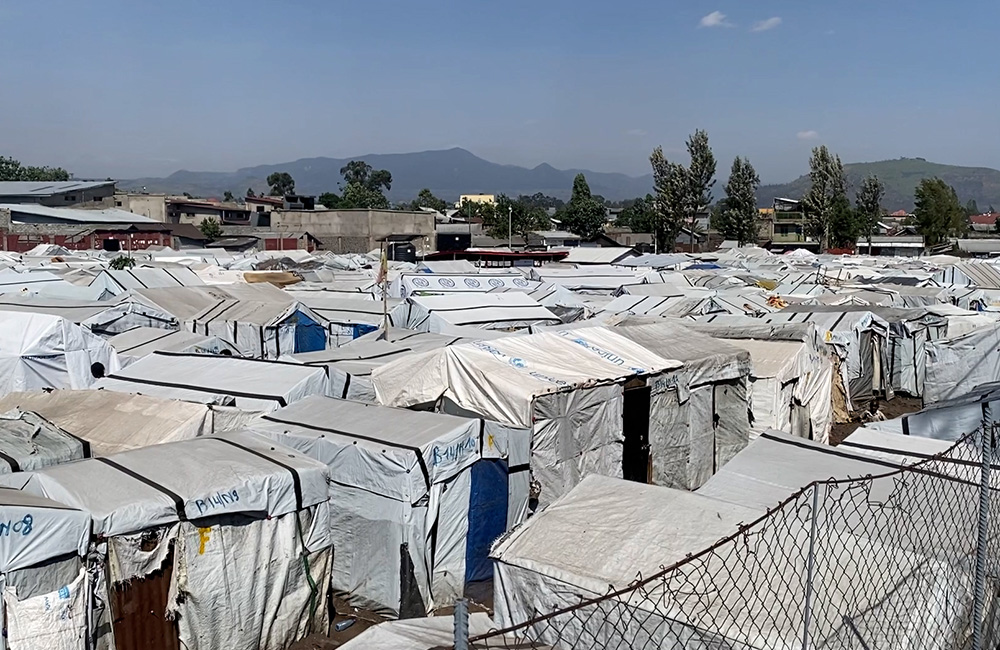Unimaginable challenges for children
On Monday 27 January, fighting reached Goma, DRC’s third-largest city, a critical co-ordination hub, and home to nearly 1.5 million children. As the fighting continues, children and families living in and around Goma currently have no safe option to escape or access much-needed humanitarian assistance. As always, children are bearing the greatest brunt of a conflict they play no part in. Some 200,000 children are suspected to be directly impacted already.

“I just want peace to return,” Chancel,* 9, a child who was displaced by violence in DRC back in 2024,
before the most recent escalation.
Photo: Save the Children.
Hospitals are overwhelmed with children and families suffering gunshot wounds and other injuries. A bomb has struck a hospital where babies were being treated on a neonatal ward. There is also huge concern that the escalating violence could trigger the spread of diseases in overcrowded displacement camps. The country has already seen recent deadly outbreaks of Mpox, Measles, Cholera and Ebola.
Malnutrition cases are also on the rise, with displaced families cut off from food, clean water and medical care, leaving the lives of children under five hanging in the balance. Nearly 4.5 million children are facing or expected to face acute malnutrition by June.
Children in the DRC are already facing one of the world’s largest humanitarian crises, with one in every four people in need of humanitarian support. Over the past three months, 780,000 people had already been forced from their homes in the broader eastern DRC region. The recent developments will be catastrophic for children and families who are already facing unimaginable challenges.

An Internally Displaced Persons camp in Goma, DRC back in 2023, before the most recent escalation.
Photo: Save the Children.
Working with partners to deliver critical support
Save the Children started working in eastern DRC in 1994. We’re currently working with 13 local partners, as well as international partners and government authorities, to deliver critical health, nutrition, water, sanitation and hygiene, child protection and education support to children and their families.
We’re operational in all three of the eastern provinces worst impacted by violence – North Kivu, South Kivu and Ituri. While much of our work continues across these provinces, we have paused all operations in Goma to protect the safety and well-being of our staff.
However, as soon as it is safe to do so, we stand ready to scale up our work to respond to children’s health and nutrition needs. Through our Child Emergency Fund we intend to support families to access essential water, sanitation and hygiene facilities to help curb the spread of illnesses and disease.
Help us respond quickly
We urge all parties involved in the conflict to prioritise the protection of civilians and humanitarian workers and personnel. Save the Children and other humanitarian partners must be able to safely access communities in need to deliver life-saving assistance.
Save the Children’s Emergency Fund is key to unlocking the critical support that children need in times of crisis like this. It helps us prepare better, respond faster, and protect longer. In times of crisis, and in the world's toughest places, we stand side by side with children.